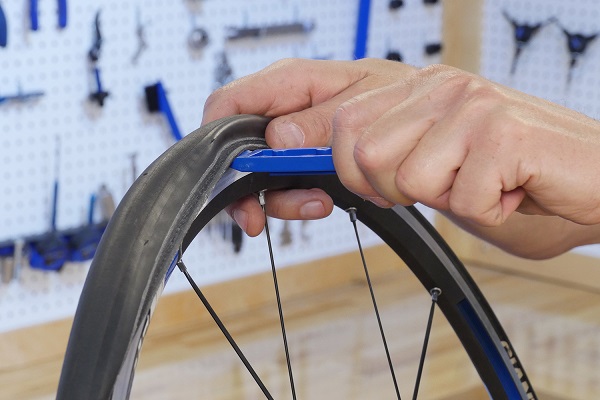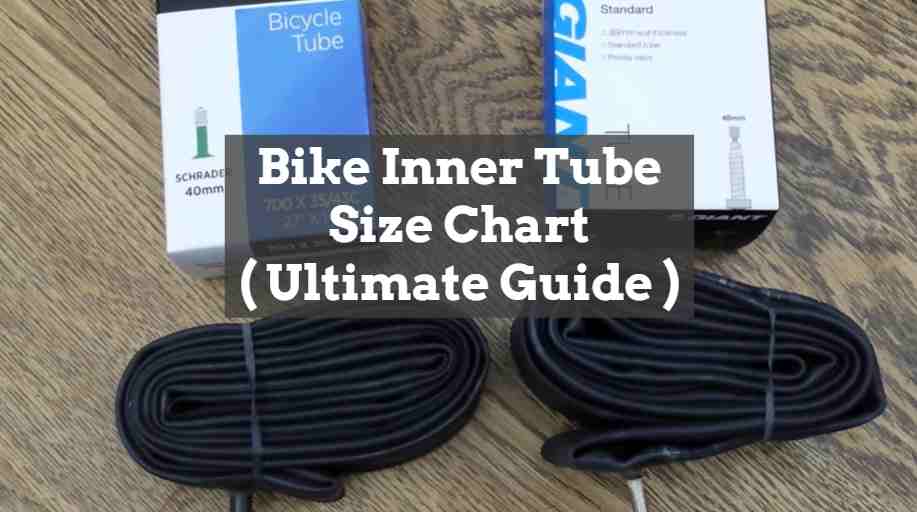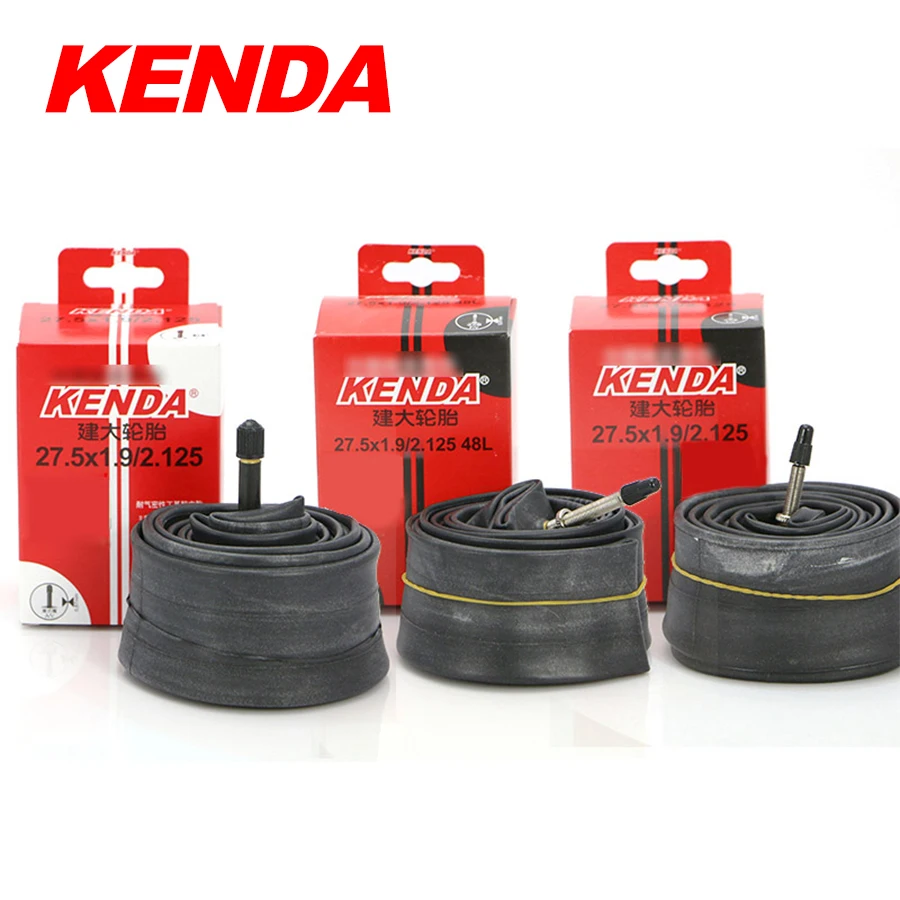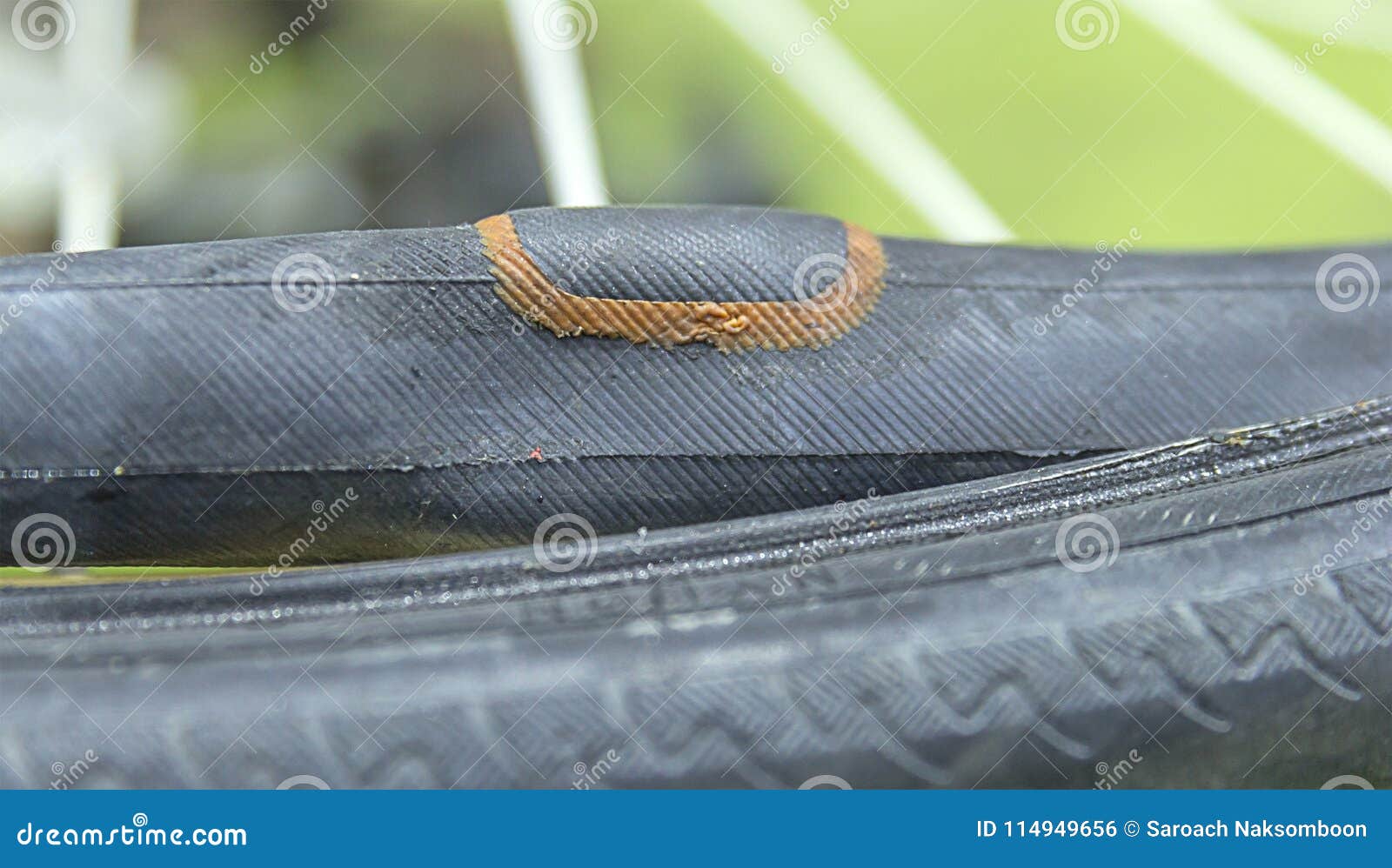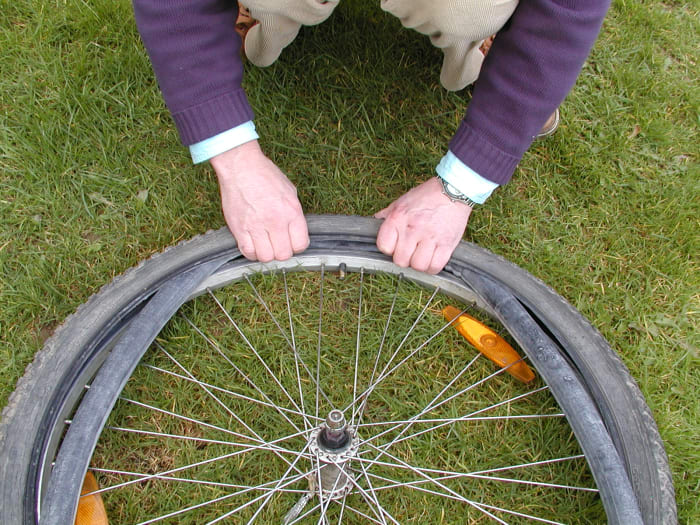What is an Inner Tube and Why is it Crucial for Your Bike?
An inner tube is a crucial component of a bicycle tire, playing a vital role in maintaining the tire’s air pressure and ensuring a smooth ride. The inner tube is a doughnut-shaped, airtight tube made of rubber or synthetic materials, which is inserted inside the tire casing. Its primary function is to hold the air pressure, allowing the tire to maintain its shape and provide the necessary cushioning and traction.
A high-quality inner tube is essential for a safe and enjoyable ride. It helps to prevent punctures, which can be caused by sharp objects, road debris, or excessive wear and tear. A punctured inner tube can lead to a loss of air pressure, causing the tire to become underinflated, which can result in reduced traction, increased risk of accidents, and decreased overall performance.
In addition to preventing punctures, a high-quality inner tube can also improve the overall cycling experience. It can provide a more comfortable ride, reduce the risk of tire blowouts, and increase the tire’s lifespan. Furthermore, a good inner tube can help to maintain the tire’s optimal air pressure, which is essential for achieving the best possible performance, efficiency, and safety.
When it comes to choosing an inner tube for your bicycle, it’s essential to consider the type of tire you have, as well as your riding style and preferences. For example, if you have a road bike, you may want to opt for a lightweight inner tube with a high air pressure rating. On the other hand, if you have a mountain bike, you may prefer a more durable inner tube with a lower air pressure rating.
In summary, an inner tube is a critical component of a bicycle tire, and choosing the right one can make a significant difference in your cycling experience. By understanding the importance of an inner tube and selecting a high-quality one, you can enjoy a safer, more comfortable, and more enjoyable ride.
How to Choose the Perfect Inner Tube for Your Bike
Choosing the right inner tube for your bicycle can be a daunting task, especially with the numerous options available in the market. However, by considering a few key factors, you can select the perfect inner tube for your bike and enjoy a smooth and safe ride.
First and foremost, it’s essential to consider the size of your tire. Inner tubes come in various sizes, and using the wrong size can lead to poor performance, reduced safety, and increased risk of punctures. To determine the correct size, check the sidewall of your tire for the recommended inner tube size. You can also consult your bike’s manual or contact the manufacturer for guidance.
Next, consider the valve type of your inner tube. There are two main types of valves: Presta and Schrader. Presta valves are more common on road bikes, while Schrader valves are often used on mountain bikes. Make sure to choose an inner tube with the correct valve type to ensure compatibility with your bike.
Another crucial factor to consider is the material of the inner tube. Inner tubes can be made from rubber, latex, or synthetic materials. Rubber inner tubes are the most common and offer a good balance of durability and performance. Latex inner tubes, on the other hand, are lighter and more flexible but may not be as durable. Synthetic inner tubes are a good option for those who want a more durable and puncture-resistant inner tube.
When selecting an inner tube, it’s also essential to consider the recommended air pressure. Check the sidewall of your tire for the recommended air pressure range, and make sure to choose an inner tube that can handle the recommended pressure.
To ensure a proper fit, it’s also recommended to measure your tire before purchasing an inner tube. You can use a tire lever to remove the tire from the rim and measure the diameter of the rim. This will give you an accurate measurement of the inner tube size you need.
Finally, consider the brand and quality of the inner tube. Look for reputable brands that offer high-quality inner tubes made from durable materials. A good inner tube can make a significant difference in your cycling experience, so it’s worth investing in a high-quality one.
By considering these factors, you can choose the perfect inner tube for your bike and enjoy a smooth, safe, and enjoyable ride. Remember to always check the compatibility of the inner tube with your bike and follow the manufacturer’s instructions for installation and maintenance.
Top Inner Tube Brands for a Puncture-Free Ride
When it comes to choosing the right inner tube for your bicycle, there are several top brands to consider. These brands offer high-quality inner tubes that are designed to provide a puncture-free ride and improve overall cycling performance.
One of the most popular inner tube brands is Continental. Continental offers a wide range of inner tubes, including the Continental Inner Tube, which is designed for road bikes and features a lightweight and durable design. Another popular option is the Michelin Airstop, which is designed for mountain bikes and features a unique valve system that helps to prevent punctures.
Schwalbe is another top brand that offers high-quality inner tubes. The Schwalbe Inner Tube is designed for road bikes and features a lightweight and flexible design that provides excellent puncture resistance. Schwalbe also offers a range of inner tubes for mountain bikes, including the Schwalbe SV, which features a durable and reliable design.
Other top inner tube brands include Kenda, Hutchinson, and Vittoria. Kenda offers a range of inner tubes, including the Kenda Inner Tube, which is designed for road bikes and features a lightweight and durable design. Hutchinson offers the Hutchinson Inner Tube, which is designed for mountain bikes and features a unique valve system that helps to prevent punctures. Vittoria offers the Vittoria Inner Tube, which is designed for road bikes and features a lightweight and flexible design that provides excellent puncture resistance.
When choosing an inner tube brand, it’s essential to consider factors such as durability, puncture resistance, and compatibility with your bike. Look for brands that offer high-quality inner tubes that are designed to meet your specific cycling needs. By choosing the right inner tube brand, you can enjoy a puncture-free ride and improve your overall cycling performance.
In addition to considering the brand, it’s also essential to read customer reviews and do your research before making a purchase. Look for inner tubes that have received positive reviews from other cyclists and are known for their durability and puncture resistance. By doing your research and choosing the right inner tube brand, you can ensure a safe and enjoyable ride.
Overall, the top inner tube brands offer high-quality inner tubes that are designed to provide a puncture-free ride and improve overall cycling performance. By considering factors such as durability, puncture resistance, and compatibility with your bike, you can choose the right inner tube brand for your needs and enjoy a safe and enjoyable ride.
The Benefits of Using a High-Quality Inner Tube
Using a high-quality inner tube can make a significant difference in your cycling experience. A premium inner tube can provide improved puncture resistance, increased durability, and enhanced ride comfort. In this section, we will discuss the benefits of using a high-quality inner tube and how it can save you time and money in the long run.
One of the most significant benefits of using a high-quality inner tube is improved puncture resistance. A good inner tube can withstand the rigors of regular cycling, including road debris, potholes, and sharp objects. This means that you can ride with confidence, knowing that your inner tube can handle the demands of your cycling routine.
In addition to improved puncture resistance, a high-quality inner tube can also increase durability. A premium inner tube is made with high-quality materials that can withstand the wear and tear of regular cycling. This means that you can enjoy a longer lifespan from your inner tube, reducing the need for frequent replacements.
Another benefit of using a high-quality inner tube is enhanced ride comfort. A good inner tube can provide a smoother ride, reducing the impact of road vibrations and bumps. This means that you can enjoy a more comfortable ride, even on rough terrain.
Using a high-quality inner tube can also save you time and money in the long run. By reducing the risk of punctures and increasing durability, you can minimize the need for frequent repairs and replacements. This means that you can save money on repair costs and enjoy more time on the road.
In addition to the benefits mentioned above, a high-quality inner tube can also provide improved performance. A good inner tube can optimize tire pressure, reducing rolling resistance and improving overall cycling efficiency. This means that you can enjoy faster speeds and improved performance, even on challenging terrain.
Overall, using a high-quality inner tube can make a significant difference in your cycling experience. By providing improved puncture resistance, increased durability, and enhanced ride comfort, a premium inner tube can save you time and money in the long run. Whether you’re a casual cyclist or a serious enthusiast, a high-quality inner tube is an essential component of your cycling routine.
Common Mistakes to Avoid When Installing an Inner Tube
Installing an inner tube can be a straightforward process, but there are several common mistakes to avoid to ensure a safe and successful installation. In this section, we will discuss some of the most common mistakes to avoid when installing an inner tube, including incorrect valve alignment, insufficient tire pressure, and inadequate tire inspection.
One of the most common mistakes to avoid when installing an inner tube is incorrect valve alignment. The valve stem should be aligned with the tire’s valve hole, and the valve cap should be securely tightened to prevent air leaks. If the valve stem is not properly aligned, it can cause the inner tube to become damaged or even punctured.
Another mistake to avoid is insufficient tire pressure. The tire pressure should be checked regularly to ensure that it is at the recommended level. If the tire pressure is too low, it can cause the inner tube to become damaged or even punctured. On the other hand, if the tire pressure is too high, it can cause the tire to become over-inflated, which can also lead to damage or punctures.
Inadequate tire inspection is another common mistake to avoid when installing an inner tube. The tire should be inspected regularly for signs of wear and tear, such as cracks, cuts, or bulges. If the tire is damaged, it can cause the inner tube to become damaged or even punctured.
Other common mistakes to avoid when installing an inner tube include using the wrong size inner tube, not properly seating the inner tube in the tire, and not tightening the valve cap securely. By avoiding these common mistakes, you can ensure a safe and successful installation of your inner tube.
To avoid these mistakes, it is recommended to follow the manufacturer’s instructions for installing an inner tube, and to take your time when installing the inner tube to ensure that it is done correctly. Additionally, it is recommended to regularly inspect your tire and inner tube for signs of wear and tear, and to replace them as needed.
By following these tips and avoiding common mistakes, you can ensure a safe and successful installation of your inner tube, and enjoy a smooth and comfortable ride.
How to Properly Maintain and Inspect Your Inner Tube
Regular maintenance and inspection of your inner tube is crucial to ensure its longevity and performance. In this section, we will provide guidance on how to properly maintain and inspect your inner tube, including tips on inspection, cleaning, and storage.
Inspection is a critical step in maintaining your inner tube. Regularly inspect your inner tube for signs of wear and tear, such as cracks, cuts, or bulges. Check the valve stem for any signs of damage or corrosion, and make sure the valve cap is securely tightened.
Cleaning your inner tube is also important to prevent dirt and debris from accumulating and causing damage. Use a soft-bristled brush to gently clean the inner tube, and avoid using harsh chemicals or abrasive materials that can damage the tube.
Proper storage of your inner tube is also essential to prevent damage and extend its lifespan. Store your inner tube in a cool, dry place, away from direct sunlight and moisture. Avoid folding or creasing the inner tube, as this can cause damage to the tube.
In addition to regular inspection, cleaning, and storage, it’s also important to know when to replace your inner tube. If you notice any signs of wear and tear, such as cracks or cuts, it’s time to replace your inner tube. Additionally, if you experience a puncture or other damage to your inner tube, it’s best to replace it immediately.
By following these tips and regularly maintaining and inspecting your inner tube, you can ensure its longevity and performance, and enjoy a smooth and comfortable ride.
It’s also important to note that different types of inner tubes may require different maintenance and inspection procedures. For example, latex inner tubes may require more frequent inspection and cleaning than butyl inner tubes. Be sure to consult your inner tube’s manufacturer instructions for specific maintenance and inspection recommendations.
By taking the time to properly maintain and inspect your inner tube, you can ensure a safe and enjoyable ride, and extend the lifespan of your inner tube.
Upgrading to Tubeless: Is it Worth the Switch?
Tubeless systems have gained popularity in recent years, and many cyclists are considering making the switch. But is it worth it? In this section, we’ll discuss the pros and cons of upgrading to a tubeless system, including the benefits of reduced weight, improved traction, and increased puncture resistance.
One of the main benefits of a tubeless system is reduced weight. Without the need for an inner tube, tubeless systems can be significantly lighter, which can improve overall cycling performance. Additionally, tubeless systems can provide improved traction, as the tire can conform to the road surface more easily.
Another benefit of tubeless systems is increased puncture resistance. Without an inner tube, there’s less risk of punctures, which can save you time and money in the long run. Additionally, tubeless systems can be more durable, as the tire is less prone to damage from road debris.
However, there are also some potential drawbacks to consider. Tubeless systems can be more complex and difficult to install, which can be a challenge for some cyclists. Additionally, tubeless systems can be more expensive, especially if you need to purchase a new wheelset or tires.
So, is it worth the switch? If you’re a serious cyclist who wants to improve your performance and reduce your risk of punctures, a tubeless system may be worth considering. However, if you’re a casual cyclist who doesn’t want to deal with the complexity and cost of a tubeless system, a traditional inner tube may be a better option.
Ultimately, the decision to upgrade to a tubeless system depends on your specific cycling needs and preferences. If you’re considering making the switch, be sure to do your research and weigh the pros and cons carefully.
It’s also worth noting that tubeless systems are not suitable for all types of cycling. For example, if you’re a commuter or casual cyclist who rides on rough roads or trails, a tubeless system may not be the best option. However, if you’re a road cyclist or mountain biker who wants to improve your performance and reduce your risk of punctures, a tubeless system may be worth considering.
In conclusion, upgrading to a tubeless system can be a great option for serious cyclists who want to improve their performance and reduce their risk of punctures. However, it’s essential to carefully consider the pros and cons before making the switch.
Conclusion: Finding the Perfect Inner Tube for Your Cycling Needs
In conclusion, choosing the right inner tube for your bicycle is crucial for a smooth and safe ride. By considering factors such as tire size, valve type, and material, you can select the perfect inner tube for your cycling needs. Additionally, understanding the benefits of using a high-quality inner tube, such as improved puncture resistance and increased durability, can help you make an informed decision.
It’s also important to remember that proper installation, maintenance, and inspection of your inner tube are essential for optimal performance and safety. By following the tips and guidelines outlined in this article, you can ensure that your inner tube is properly installed and maintained, and that you’re getting the most out of your cycling experience.
Whether you’re a casual cyclist or a serious enthusiast, the right inner tube can make all the difference in your ride. By considering your specific cycling needs and preferences, you can find the perfect inner tube for your bicycle and enjoy a safe and enjoyable ride.
In summary, the key takeaways from this article are:
- Choose the right inner tube for your bicycle by considering factors such as tire size, valve type, and material.
- Understand the benefits of using a high-quality inner tube, such as improved puncture resistance and increased durability.
- Properly install, maintain, and inspect your inner tube for optimal performance and safety.
- Consider your specific cycling needs and preferences when selecting an inner tube.
By following these tips and guidelines, you can find the perfect inner tube for your bicycle and enjoy a safe and enjoyable ride.


